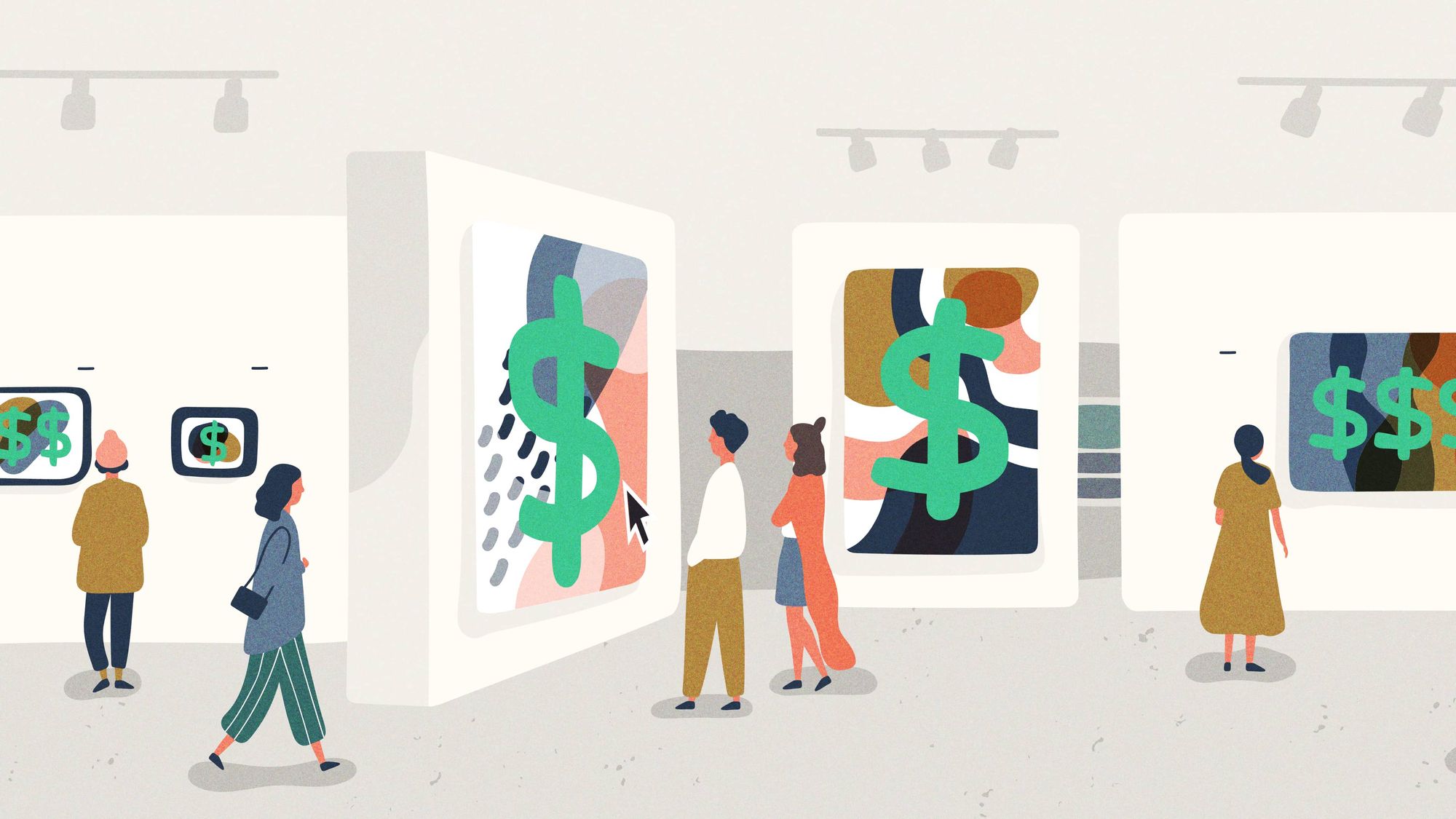Nonsensical NFTs

What the latest crypto craze can tell us about the good, the bad and the weird of the blockchain world.
Chances are that unless you’re being kept in some sort of subterranean dungeon and/or have been pronounced clinically dead, you’ve read something about NFTs over the last few weeks.
What started as the occasional explainer as to why people were spending thousands of dollars on NBA highlights videos rapidly transitioned to thinkpieces about how NFTs were going to save or destroy art, music, film and everything in between, roaring Twitter fights and, to top it all off, a digital picture by the artist Beeple selling at auction for US$69 million.
I’ve been around crypto for a while now and even I’ve been shocked by the speed with which the idea of an NFT has gone from “cool, quirky crypto concept” to “mainstream media freakout factory”. Like, I only really engaged with the topic six weeks ago, and I consider myself a pretty on-the-ball crypto watcher. Now we’ve hit the level of media saturation usually reserved for incoming meteor strikes, US Presidential elections or Kardashian photo shoots. So, what the hell is going on?

Nice, fancy things
Standing for Non-Fungible Token, an NFT is basically a blockchain-verified proof of ownership that can be tied to, well, anything. The idea is that you can make as many copies or screenshots of something as you want, but if you look at the blockchain you’ll be able to prove that, yes, you are the person who spent US$69 million on a very high resolution JPEG.
On the face of it, this does seem dumb. But underneath the surface, there’s a lot of interesting stuff going on.
For one, NFTs offer artists, musicians and performers new ways of monetising and controlling their work. Not only can you directly (and legally) transfer ownership of something you’ve created, but you can also ensure that you get a cut of any future sales of your work. That of itself represents one of the biggest conceptual challenges to intellectual property and licensing laws since the advent of the internet.
They also offer a template for the blockchain-ing of all sorts of real world things - property deeds, concert tickets, passports. These aren’t necessarily novel uses of the blockchain, but an NFT packages it up in a way that makes sense to people and will make it easier to shift it into the mainstream.
Nope, f**k that
The histrionics from those arguing against NFTs – usually some variant on, “why do they suck? Because they’re dumb” – reminds me of the arguments we heard when bitcoin started its climb towards $20k in 2017.
And, sure, right now a lot of it does suck. A browse through the front page of an NFT market like OpenSea does not make for edifying viewing. The valuations on most tokens are entirely untethered from reality and you can already sense that we’re just counting down the days until the whole market implodes.
From a crypto standpoint, though, here’s why NFTs feel important: because, for the first time, crypto has created something tangible, a technological breakthrough visible from the real world. No need to invoke abstract financial concepts like inflation or money supply. No need to try and get people excited about smart contracts, scaling solutions and level 2 application layers. You like that art? You can have it, forever, for a price. Let the chaos begin.
Now for the...
It’s difficult to know what happens next with NFTs, but crypto’s own bubble-strewn history offers some lessons. And this current frenzy doesn’t remind me of 2017 so much as it does November 2013, when an immature, hype-driven crypto market saturated with bitcoin clones went from obscurity to TV news coverage in a matter of weeks and then disappeared just as quickly.
In tech circles, people talk about something they call Amara’s Law (after the futurist Ray Amara), which states that we tend to overestimate the impact of a technology in the short run, but underestimate it in the long run.
Read the coverage of NFTs right now and it might feel like they’re about to take over the world. However, in all likelihood, six months from now everyone will be looking back at that weird moment in our shared history when people thought they were going to become rich by flogging NBA highlights packages that you could watch for free on YouTube. How dumb is that!
But in the background the true believers and the visionaries will keep on working, thinking and developing, and a few years from now we might look up to find that NFTs are at the heart of radical new models of commerce, art, ownership and identity. A few years after that we might be using them every day without even knowing that they’re there.
Will that come to pass? Only time will tell. In the meantime, who wants to buy this picture of my elbow for 20 ETH?
Don’t invest unless you’re prepared to lose all the money you invest. This is a high‑risk investment and you should not expect to be protected if something goes wrong. Take 2 minutes to learn more: www.coinjar.com/uk/risk-summary.
Cryptoassets traded on CoinJar UK Limited are largely unregulated in the UK, and you are unable to access the Financial Service Compensation Scheme or the Financial Ombudsman Service. We use third party banking, safekeeping and payment providers, and the failure of any of these providers could also lead to a loss of your assets. We recommend you obtain financial advice before making a decision to use your credit card to purchase cryptoassets or to invest in cryptoassets. Capital Gains Tax may be payable on profits.
CoinJar’s digital currency exchange services are operated in Australia by CoinJar Australia Pty Ltd ACN 648 570 807, a registered digital currency exchange provider with AUSTRAC; and in the United Kingdom by CoinJar UK Limited (company number 8905988), registered by the Financial Conduct Authority as a Cryptoasset Exchange Provider and Custodian Wallet Provider in the United Kingdom under the Money Laundering, Terrorist Financing and Transfer of Funds (Information on the Payer) Regulations 2017, as amended (Firm Reference No. 928767).

